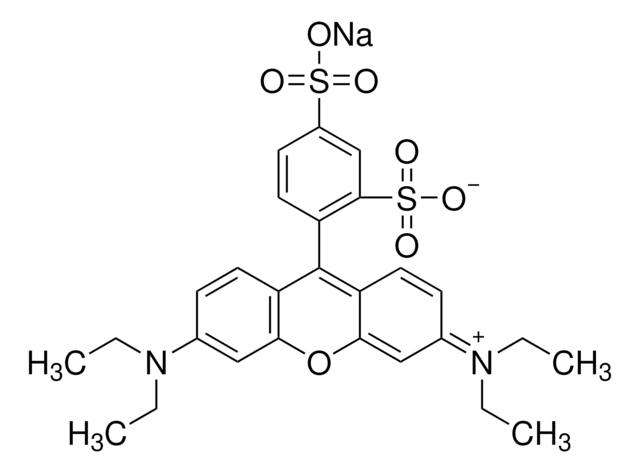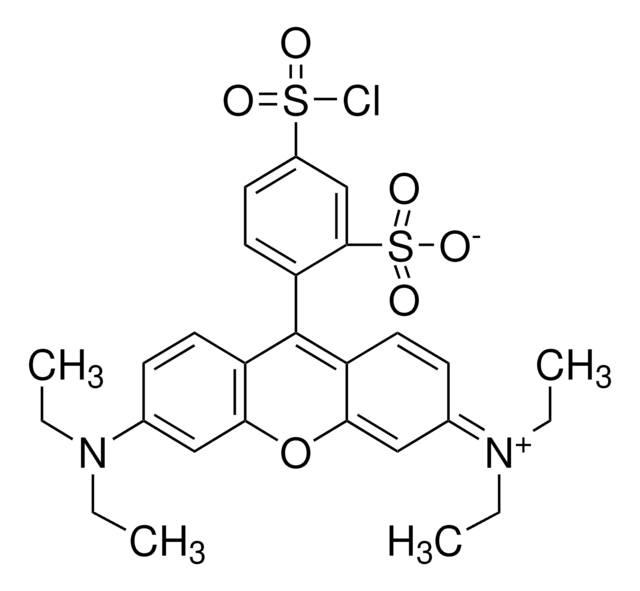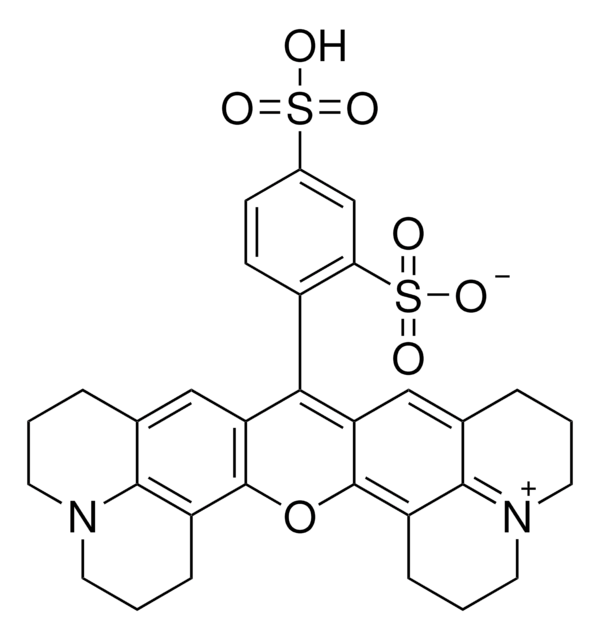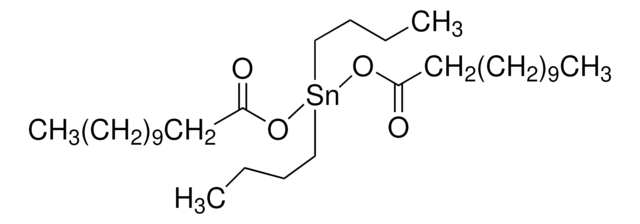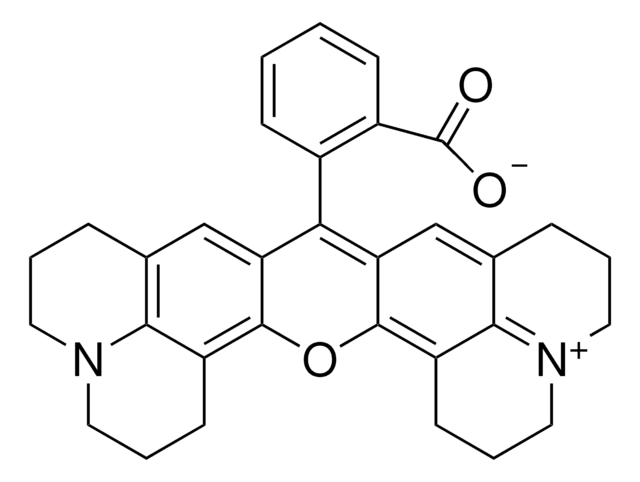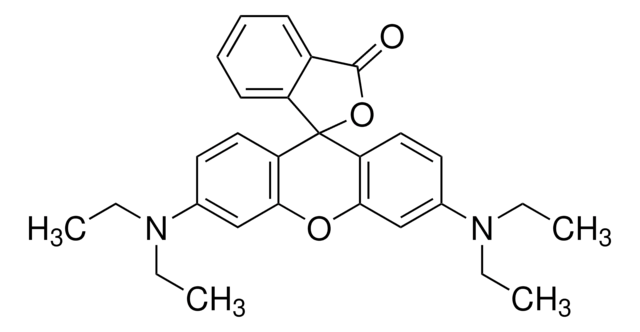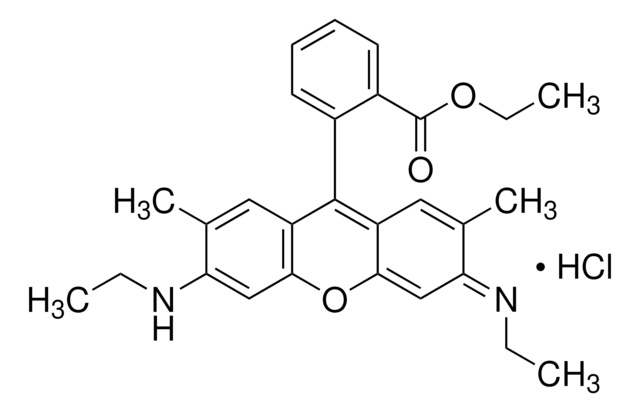341738
Sulforhodamine B, acid form
laser grade, Dye content 95 %
About This Item
Recommended Products
grade
laser grade
form
solid
composition
Dye content, 95%
mp
>300 °C (lit.)
λmax
558 nm
SMILES string
CCN(CC)c1ccc2c(OC3=CC(\C=CC3=C2c4ccc(cc4S([O-])(=O)=O)S(O)(=O)=O)=[N+](/CC)CC)c1
InChI
1S/C27H30N2O7S2/c1-5-28(6-2)18-9-12-21-24(15-18)36-25-16-19(29(7-3)8-4)10-13-22(25)27(21)23-14-11-20(37(30,31)32)17-26(23)38(33,34)35/h9-17H,5-8H2,1-4H3,(H-,30,31,32,33,34,35)
InChI key
IOOMXAQUNPWDLL-UHFFFAOYSA-N
Looking for similar products? Visit Product Comparison Guide
General description
Application
Storage Class Code
11 - Combustible Solids
WGK
WGK 3
Flash Point(F)
Not applicable
Flash Point(C)
Not applicable
Personal Protective Equipment
Certificates of Analysis (COA)
Search for Certificates of Analysis (COA) by entering the products Lot/Batch Number. Lot and Batch Numbers can be found on a product’s label following the words ‘Lot’ or ‘Batch’.
Already Own This Product?
Find documentation for the products that you have recently purchased in the Document Library.
Customers Also Viewed
Articles
Developed in the last several years, fluorescence quenching microscopy (FQM) has enabled rapid, inexpensive, and high-fidelity visualization of two-dimensional (2D) materials such as graphene-based sheets and MoS2.
Graphene has emerged as the new wonder material. Being only one atom thick and composed of carbon atoms arranged in a hexagonal honeycomb lattice structure, the interest in this material has exploded exponentially since 2004 when it was first isolated and identified using a very simple method.
Our team of scientists has experience in all areas of research including Life Science, Material Science, Chemical Synthesis, Chromatography, Analytical and many others.
Contact Technical Service